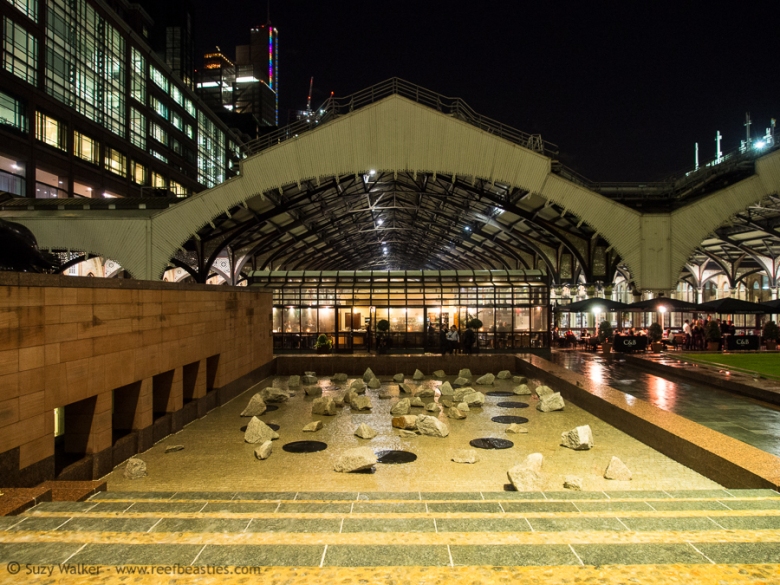So theres a London festival of Photography on this June – who knew? I didn’t see any adverts about it anywhere. So at the end of June I see the link. Figures. Since there’s still this week left of June I made a mission to see at least one exhibition. Luckily the Frederick Wilfred exhibition of London Photographs is in the Museum of London (until 8th July), which despite being only minutes from my office I have never been to. For shame. I went yesterday lunchtime. The exhibition itself is only small, less than 10 photos but it was lovely to see the old views of London. I especially liked the one with the butcher staring out at the photographer past all the meat in his shop window.
My tutor sad I should try some street photography, so on the way there and back (and cheekily inside the museum) I took some shots with my iPhone.
Make Love Not War:
As I came back I saw a bunch of dressed up Army guys with massive guns crossing the road, called Love Lane. I wanted to get both the sign and the group of men in the shot.

Museum of London:
The architecture around the museum is quite nice, this view of the museum is from the foot bridge over the road. I like all the zigzags lines and many block shape windows. Pity the iPhone blew out the sky, but it was pretty sunny.

Lift:
Inside the museum they had this amazing 1930s Bronze lift that used to be in Selfridges. This part of it caught my eye.

Taught:
There were quite a few little school parties of kids all being taught about our great cities history. These guys are learning about the time before the Romans got here.

GuildHall Flags:
They were having some fancy todo at the guildhall (I asked someone and thought thought perhaps a flag was being raised). All the preparations were out, ambulances, union jacks, microphones, chairs for the old folks etc etc. Unfortunately I couldn’t stay for the main event as I had to get back to work.

Anyway, I hope to bring you more lunchtime wanders. You never know I might even get to more of those exhibitions this week!


















































 This photo is actually an optical illusion. The diver swimming by happened to have his flash set on slave so when mine went off so did his. Now normally this would ruin a photograph however my flash was pointed at the corals in such a way it looks like the diver had a torch on the corals creating an implied relationship (even though in reality he was much too far away). This small version here shows the implied lines, the main arrow shows the “torch beam” effect. And the smaller implied line shows the space for the diver to swim into.
This photo is actually an optical illusion. The diver swimming by happened to have his flash set on slave so when mine went off so did his. Now normally this would ruin a photograph however my flash was pointed at the corals in such a way it looks like the diver had a torch on the corals creating an implied relationship (even though in reality he was much too far away). This small version here shows the implied lines, the main arrow shows the “torch beam” effect. And the smaller implied line shows the space for the diver to swim into.


 This guy on the front of the Duomo in Florence looks as though he’s impeaching the heavens. You follow his eye line upwards but the alcove that he’s sitting in all point inwards and the star pattern leads your eye back down to him again creating a circuit within the frame.
This guy on the front of the Duomo in Florence looks as though he’s impeaching the heavens. You follow his eye line upwards but the alcove that he’s sitting in all point inwards and the star pattern leads your eye back down to him again creating a circuit within the frame.
























